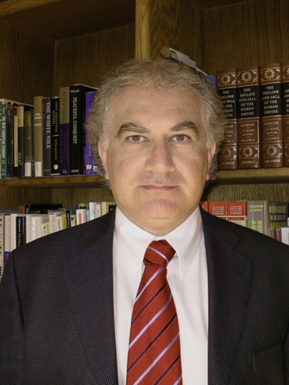Armenian History: What Really Happened?
In his new textbook, CAS Prof Simon Payaslian debunks the myths of Armenian history

Most of the writing on Armenian history is grounded in mythology rather than fact, says Simon Payaslian, BU’s Charles K. and Elisabeth M. Kenosian Professor in Modern Armenian History and Literature. Payaslian seeks to remedy this and to address the major issues affecting the country today in his new book, The History of Armenia: From the Origins to the Present (Palgrave Macmillan, 2007).
“The main purpose was to present a comprehensive analysis of Armenian history,” says Payaslian, a College of Arts and Sciences associate professor of history. “It gives a more realistic analysis without relying on the mythologies.”
He takes an in-depth look at Armenian leaders and at the nation’s ability to survive invasions, and he analyzes the status of women in the country. He believes policy makers and analysts can use these historical lessons to improve current conditions.
“I’m hoping this will be similar to an American history textbook,” Payaslian says, “where we are not really repeating the same old mythologies over and over again without looking at the real issues involved.”
Payaslian received a certificate of recognition in January from Assembly member Paul Krekorian on behalf of the California State Assembly for his work on the book.
Rebecca McNamara can be reached at ramc@bu.edu.
Comments & Discussion
Boston University moderates comments to facilitate an informed, substantive, civil conversation. Abusive, profane, self-promotional, misleading, incoherent or off-topic comments will be rejected. Moderators are staffed during regular business hours (EST) and can only accept comments written in English. Statistics or facts must include a citation or a link to the citation.